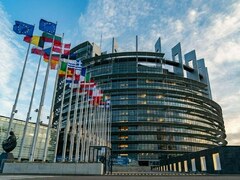Thursday saw a low volume of trading activity in the ready cotton market. In fact, the market was reported to be subdued with rates on the declining side. Larger mills are mostly covered as earlier they had opted to purchase imported cottons to meet their quality requirements. Also, weaker rates of cotton on the market reflect the essentially poor quality of leftover lint which is said to range from 500,000 to 550,000 bales (150 Kgs) from the current crop (2015/2016).
According to traders in the market, lint prices relented between Rs 100 to Rs 200 per maund (37.32 Kgs) compared to last week. Even yarn prices are said to be on the weak side.
On Thursday, seed cotton (Kapas/Phutti) prices in Sindh were said to have ranged from Rs 2000 to Rs 2200 per 40 Kgs, while in the Punjab they reportedly ranged from Rs 2500 to Rs 2900 per 40 Kilogrammes. Now very little seed cotton is left in the market.
Lint cotton prices in lower Sindh were said to have prevailed from Rs 4000 to Rs 4500 per maund (37.32 Kgs), while in Khairpur / upper Sindh they extended from Rs 5000 to Rs 5400 per maund, according to the quality. In the Punjab also the prices of cotton were dullish and reportedly ranged from Rs 5000 to Rs 5500 per maund, according to the quality.
Yarn sales were said to be going on but mostly at unviable prices. Overall, the problems of the domestic textile industry were said to be increasing.
Global cotton prices were also said to be subdued. Thus cotton prices in China, United States and India were said to be essentially under pressure except when traders entered the market to cover their short positions.
Last Tuesday the Karachi Cotton Association (KCA) convened a conference to discuss the disastrous outcome of cotton output during the current season (August 2015 / July 2016) when Pakistan reaped only about 9.8 million bales (155 Kgs) against the projected output of nearly 15 million bales. All Pakistan Textile Mills Association (APTMA), Pakistan Cotton Ginners Association (PCGA), Farmers Associates Pakistan (FAP) and also the officials of the Ministry of Textile Industry and the Cotton Commissioner attended.
The conference pleaded for a declaration of "an agriculture and cotton industry emergency" so that both the private sector and the government departments / institutions work together to achieve optimum production of clean cotton and also enable the growers to receive their due share of income.
The meeting also demanded activation of Sindh and Punjab extension departments and the proper and full enforcement of the Cotton Contract Act. Chairman of KCA Khawaja Tahir Mahmood said that only a better cotton crop would make it possible to boost the overall economy of Pakistan and provide more jobs in the country. Special attention was also sought to maintain the purity of the seeds, their resistance to pests and their scientific propagation.
On the global economic and financial front, investors and economic evaluators were mostly interested to know what interest rates policy the United States Federal Reserve would adopt for the running year 2016 and beyond. This week they got the answer.
In view of the continuing economic slowdown globally, the Federal Reserve decided to keep a key interest rate unchanged lest the United States economy is adversely affected. It now appears that the Federal Resave has adopted a conservative approach lest a quick rise in interest rates, as envisioned earlier, vitiate whatever moderate progress the American economy has made.
A sharp slowdown in the Chinese economy and fears that increase in interest rate by the Federal Reserve could hamper any progress the economy has made, the American Central Bank decided to desist from increasing interest rates at this juncture.
Another fear that has crept up in people's mind is the possibility of Republican contender Donald Trump being elected as the president of the United States in the forthcoming elections in November 2016. According to Graeme Wearden, the prestigious Economist Intelligence Unit (EIU) has stated that "the Republican frontrunner could prove a dangerous world leader, damaging global trade, stirring up trouble with Beijing and adding to instability in the Middle East".
Another piece of negative news concerns the shrinking of the trade surplus in the Eurozone in January 2016. Again this slowdown in the Eurozone's economy is being ascribed to slower growth in China as well as other large developing economies such as Brazil.
Another lingering worry is the prospect of Great Britain leaving of the European Union. Recent polls indicate that those supporting Britain's exit from the European Union are higher than those wanting the U.K. to remain in the European Union. Thus the very idea of "Brexit" is rattling much of Europe persistently as such a prospect would indeed shatter the concept of a close knit Europe with common socio-economic ideologies.
In other financial news, Deutsche Boerse AE and London Stock Exchange Group Plc (LSE) are said to have agreed to a joint deal to establish a European trading house of gigantic proportions to be able to compete largely with their U.S. counter parts.
Be that as it may, the global economy essentially remains in unprecedented turmoil.
BR100
12,247
Increased By
520.9 (4.44%)
BR30
38,316
Increased By
1938.9 (5.33%)
KSE100
114,100
Increased By
4586.8 (4.19%)
KSE30
36,110
Increased By
1596.3 (4.63%)

























Comments
Comments are closed.